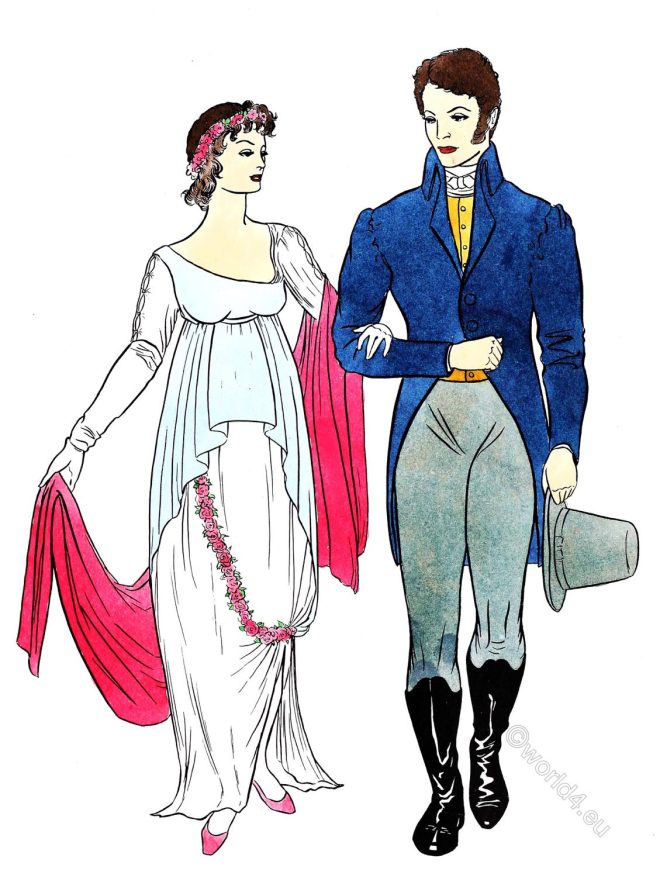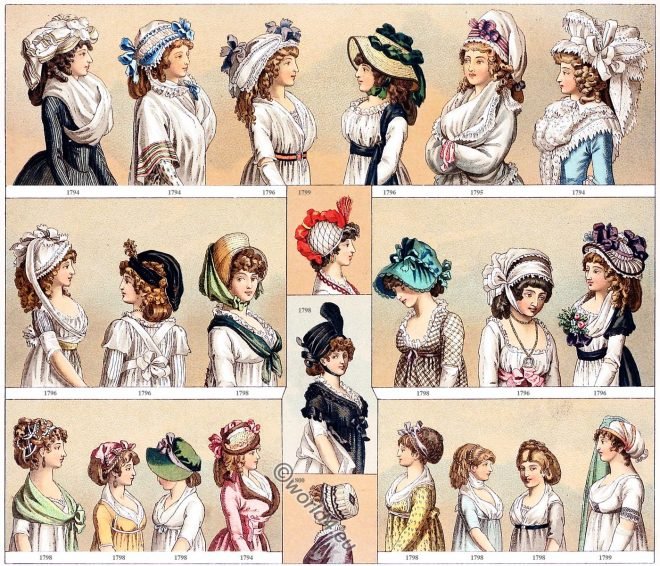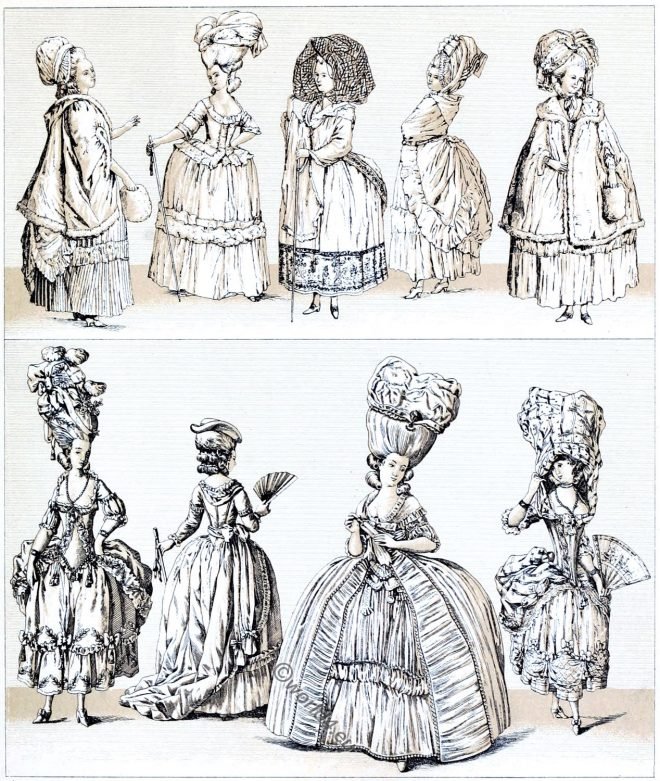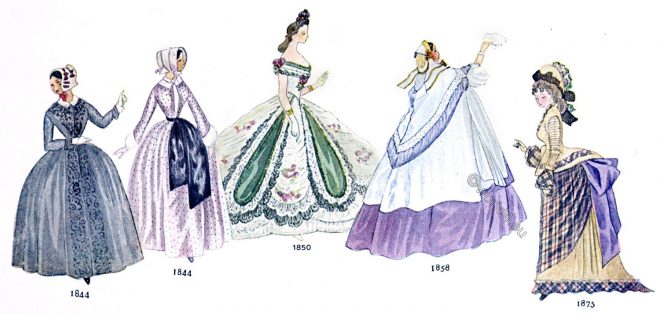The leading fashion designers of the eighteenth century looked to the sixteenth century and later to classical Greece and Rome for ideas and inspiration.
Tag: Neoclassicism
French directoire. Neoclassical fashion in the transition to the Empire.
French directoire. Neoclassical fashion in the transition to the Empire. 1789-1800.
Empire Romantic period. Formal evening wear. Party dress.
The party dress here shows definite leanings toward the Romantic period, which began with 1815.
Costumes and shawls. French directorate, consulate and first Empire.
Costumes and scarves in the 18th and 19th century. The fashion of classicism during the French directorate, consulate and first empire.
Fashion types of the Directory. Stock exchange speculators and crooks.
France 18th century. Fashion types from the time of the Directory. Stock exchange speculators and crooks. The Merveilleuses and the Incroyables.
Empire period. Two women at an Official ball in the Strasbourg Theater.
Womens fashion at an Official ball during the French Empire in 1804. White remained a very popular color for women during the Empire period.
Canova’s Tomb in the Church of Santa Maria dei Frari in Venice.
Tomb of Antonio Canova (1757-1822) sculptor. He is considered one of the main representatives of Italian classicism.
Female costumes and fashion from 1794 to 1800. France 18th century.
The comfortable costume, in which the belt was attached at a normal height, was soon followed by the close-fitting dress, the robe collante
Extravagance of clothes and hairstyles during the rococo period.
France 18th century.
Female costumes of the rococo. Fashions from the first period of the government of Louis XVI. Extravagance of clothes and hairstyles.
The hoop skirt and its development within the history of costumes.
The hoop skirt in the age of the Spanish fashion (Renaissance) 16th century, in the age of rococo (Baroque), 18th century, crinoline fashion, 19th century.










